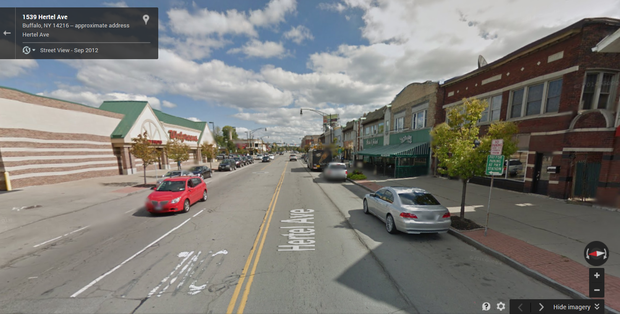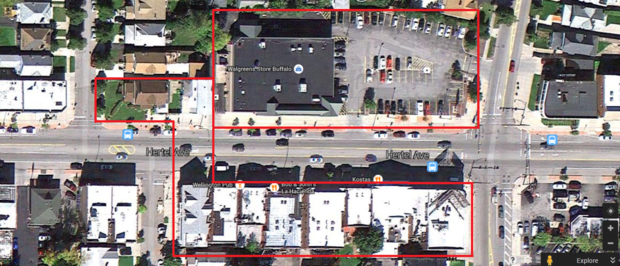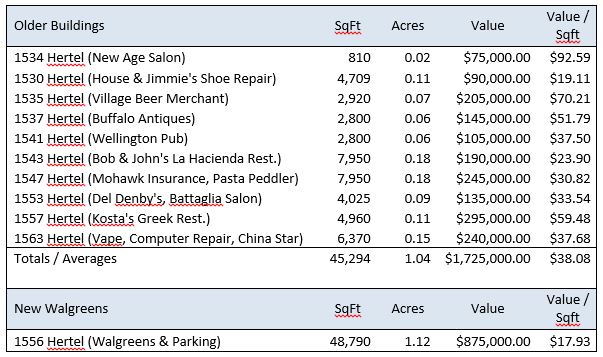The Taco John's of Buffalo
Jordan Then is a resident of Buffalo, NY and a board member of NorthBuffalo.org, a non-profit community group dedicated to working with residents, businesses, and visitors to improve quality of life in the North Buffalo Community. We asked Jordan to put together this writeup when he ran an analysis in Buffalo inspired by our Taco John's case study. You can follow the work in North Buffalo on Facebook @NorthBuffalo.org and on twitter @NorthBuffaloOrg.
Inspired by Charles Marohn’s recent blog post “The cost of auto orientation, update” I decided to run the numbers on one of my least favorite developments in my neighborhood of North Buffalo with the City of Buffalo, NY.
North Buffalo was developed in the early 20th century as a “streetcar suburb”. Originally, there were two main commercial streets in the neighborhood, Delaware Ave, running north-south, and Hertel Ave, running east-west. Unfortunately, Delaware Avenue was converted into a commuter STROAD sometime in the middle of last century and development over the past 50 years reflects that fact. There are very few old commercial buildings remaining.
Hertel Ave. however, still retains much of its pedestrian orientation. Some years ago, with the City’s blessing, Walgreens demolished most of a block of older two-story mixed-use buildings to build a new store. It had three curb-cuts, parking for 51 cars and a drive-thru pharmacy. The rest of the block and the block across the street maintain their historic structures, in various states of repair.
 Using property information available from the City of Buffalo website (http://www.ci.buffalo.ny.us/applications/propertyinformation/default.aspx) I was able to compile the below chart:
Using property information available from the City of Buffalo website (http://www.ci.buffalo.ny.us/applications/propertyinformation/default.aspx) I was able to compile the below chart:
As you can see, the older buildings have a value 212% higher per square foot than the new Walgreens. The city collects $51,284 dollars in property tax on the older buildings compared to $26,013 from the new Walgreens. The older buildings also contain 15 businesses and an unknown number of second story apartments, which enhance the overall walkability of the neighborhood, while the blank wall of the Walgreens provides nothing for pedestrians.
Unlike Brainerd, Buffalo is in the midst of adopting a new form-based zoning code that will hopefully prevent this type of “development” in the future. In the meantime, we are stuck with gap-toothed streets caused by short-sighted development that has devalued our neighborhoods.


